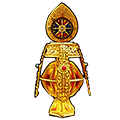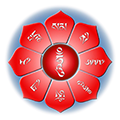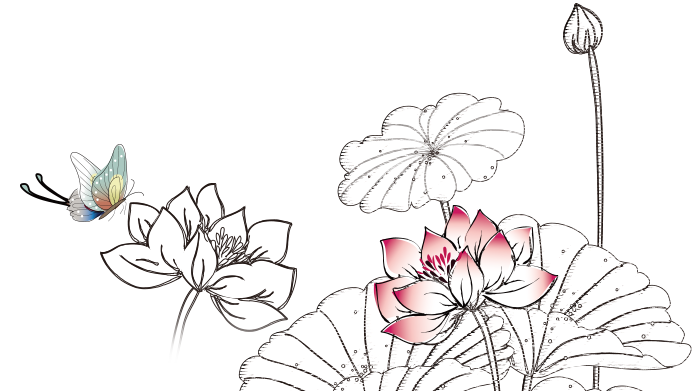The `Theory` Approach
While the `theory` approach consists of scriptures studying, the `practice` approach consists of actual practice such as the True Buddha Tantric Practice. One may combine both approaches and treat them equally. However, if one has more affinity with the `theory` approach, one may take that approach. Or, if one prefers the `practice` approach, one may do so too.
I would like to offer a few of my opinions here. Sometimes it is very difficult to gain a comprehension of the `theories` as the Buddhist Canon is very vast and profound. Buddha Shakyamuni has often said, `The Dharmas I have taught is like the earth in my palm while the Dharmas I have not taught is like the great land.` The Buddha has preached for forty nine years and what he has touched upon only amounted to a few grains of sand when compared to the whole buddhadharma or Truth which is as vast as the Earth. That being the case, my teaching today will only amount to a few pinhead sized specks, which will be gone when I blow some air on it. [audience laughter] How can one learn all the buddhadharma which is as vast as all the land when what the Buddha has taught in forty nine years only amounted to a hand`s grasp of earth? Therefore, the amount of `theories` is vast and the `theory` approach is very difficult. The `practice` approach is relatively easier.
You might presume that the `theory` approach is simpler. Actually it is not simple at all! Just ask yourself if you know how your eyes can see things. You will say, `I just open my eyes and I can see things.` Seeing seems such a simple act, but the mechanisms involved are not simple at all. I am asking if you know how the reflection and refraction of an object enters into your eyes to stimulate the optic nerves which send signals to a certain part of your brain, and how you are suddenly shown an image and thus be able to perceive the shape of the object. You do not understand the hidden mechanisms involved. Likewise, the waving of my hand here also involves some very intricate mechanisms. [audience laughter] How and why is my hand waving like this? You make an intention or an oral command to wave your hand and a certain part of your brain receives that message. Do you know which part of your brain is that? Although medical technology today is very advanced, there is still a great deal we don`t know about the mapping of the brain and its functions. When the intent is perceived by the brain, do you know which part of your brain then orchestrates the motor nerves and subsequently all the movements of tendons, bones, blood, and flesh to make your hand wave? You do not know and are not aware of any of these. [laughter] [audience laughter] I am just asking you about the working of your own body and none of the mechanisms is simple!
You know that when you eat, you open your mouth and, with the chopsticks, you move the food into your mouth. The food automatically enters into your esophagus instead of the trachea. If your autonomic response is slow, the food might enter into the trachea by mistake, you will have an asthmatic attack. When the food passes through the esophagus to reach your stomach, your stomach then starts to move, to exercise, and to grind the food. Do you know how the stomach moves? Are the movements progressive or reversed, clockwise or anticlockwise? Why are the grinding of the food necessary? If you have not made a study of it, you do not know. The food then passes through the duodenum to the small intestine and then the large intestine. Secretion and absorption takes place both at the stomach and the small intestine. Do you know how the large intestine moves? You only know how to eat the % large intestine [an ingredient found in some Chinese dishes], but large intestine of a pig [popular dish among Chinese], but you do not know how it moves. The large intestine also contracts and pushes its content to the anus. [audience laughter] From the moment the food is ingested to the moment it is excreted, it has undergone great transformations. How many people study these and understand them in great details? How is the food broken down via the aid of enzymes into amino acids, fatty acids, and sugars that can be absorbed across the intestinal walls? There are also the processes of metabolism and transportation involved. The transport system is made up of arteries, veins, capillaries, and there is also exchange at the cellular level. You all know that the cells are the units that make up the human bodies. Well, do you know what is inside a cell? [Someone replies, `Life.`] I also know that it has life. [laughter] [audience laughter] Cells of course have life. Perhaps someone who is a doctor or nurse will understand these mechanisms better. Do not feel ashamed if you don`t know? As a matter of fact, I also do not know. [laughter] [audience laughter] My point is that it is very difficult to understand the `theories` of the buddhadharma, you do not even understand all the mechanisms in your own body. You only bring the food into your mouth and you do not care what happens to it after ingestion. You do not know in fact all these subtle mechanisms involved in the process.
The same thing can be said about the theories or doctrines of the buddhadharma or the Truth of the universe. It is difficult to understand all of Truth through a dissociative study of the universe. On the other hand, if you participate in the actual practice, experience it, you will gradually know what the Dharma Taste is and what the subtleties are. You can only truly know the subtleties of the Truth by identifying with it and experiencing it.
Many doctrines are found in the Buddhist scriptures. These doctrines are also expounded by many people who do not necessarily have the experience of Dharma Taste. Even though they know where to look for the Dharma Taste, they cannot taste it. The most important thing is `eating` and getting nourished. If one postpones eating the food until one completely understands the mechanisms involved in `the waving of the hand,` `the perception of an object by the eyes,` and `the various biological and chemical processes in digestion,` one would have died of starvation. One may be able to read the whole Buddhist Canon once, thrice, or even one hundred times in one lifetime, but can one understand every doctrine in it? It might take many lifetimes before one can understand everything in the whole Buddhist Canon. One may read the scriptures day in and day out and from youth to old age, but there will not be any experience of the Dharma Taste unless one %% starts doing actual practice or penetrates starts doing actual practice. One will not taste the Dharma without penetrating the meaning of the doctrines. Yet it is possible that one may die before one can penetrate the meaning of the doctrines! Therefore, do not bother with how a dish is prepared, go and eat it first. We will eat the food first ?we will start the Actual Practice first.
The Buddha has said that `the benefit of actual practice surpasses that of a wide seeking of knowledge.` Who was most famous for having been exposed to the most doctrines? %% Ananda, the disciple. Ananda, one of the Ten Chief disciples of Buddha Shakaymuni. However, he was the last of the disciples to attain Realization. Mahakashyapa had a great dislike for Ananda. [audience laughter] Among all of the disciples, Mahakashyapa had a horrid temper and was the most easily aggravated one. He was very skinny and had an extremely angular face. In front of the Buddha, Mahakashyapa was very respectful, but sometimes he would act on his own will and ignore the Buddha`s words. The Buddha would call to him, `Do not stay so far away! Do come and spend some time at the Bamboo Grove Vihara. Eat a little bit more food to keep yourself nourished!` Mahakashyapa would not listen. He had a strong will power and liked to stick to his ascetic practices. When he saw Ananda, he would fly into a rage! [audience laughter] He felt that Ananda had too much greed. Ananda was fond of good food and beautiful clothes. When he saw a piece of beautiful clothing that belonged to the Buddha, he would steal it and put it on himself. [audience laughter] When the Buddha was away, he would sit on the Buddha`s chair and lecture the younger disciples. He was also very fond of women. [audience laughter] Ananda`s desires were the strongest among the disciples. In reality, the Buddha greatly praised Mahakashyapa despite his horrid temper and frequent absence from the Buddha`s company. The Buddha considered Mahakashyapa to be an adept of Actual Practice who had attained the greatest level of Realization among the disciples. How about Ananda? He was the last to achieve Realization. [audience laughter] Not just Mahakashyapa disliked Ananda, many other disciples also disliked him. This was because Ananda had been an attendant of the Buddha for a long time and people were jealous of him. [audience laughter] There was also some competition going on among the disciples.




